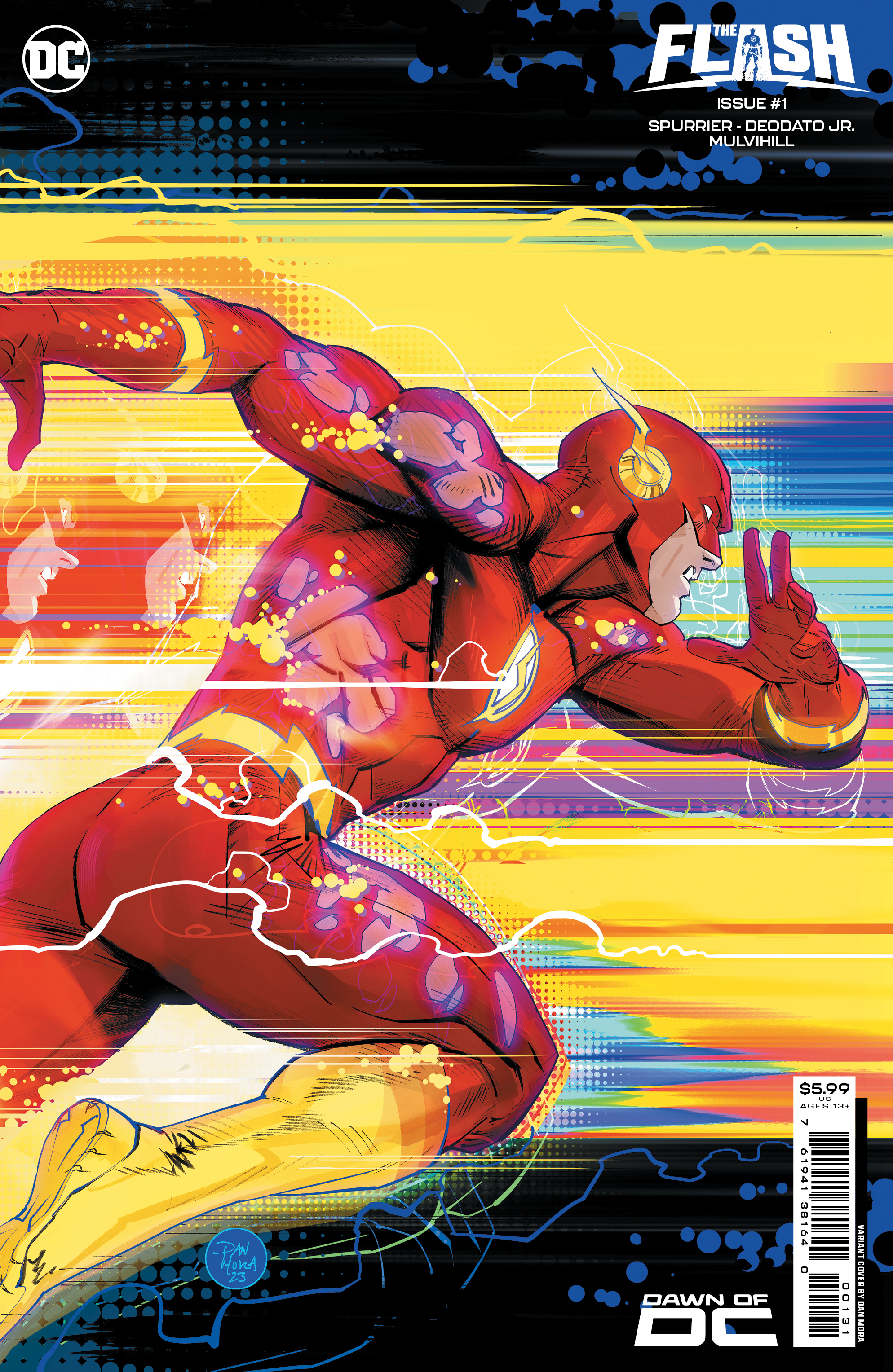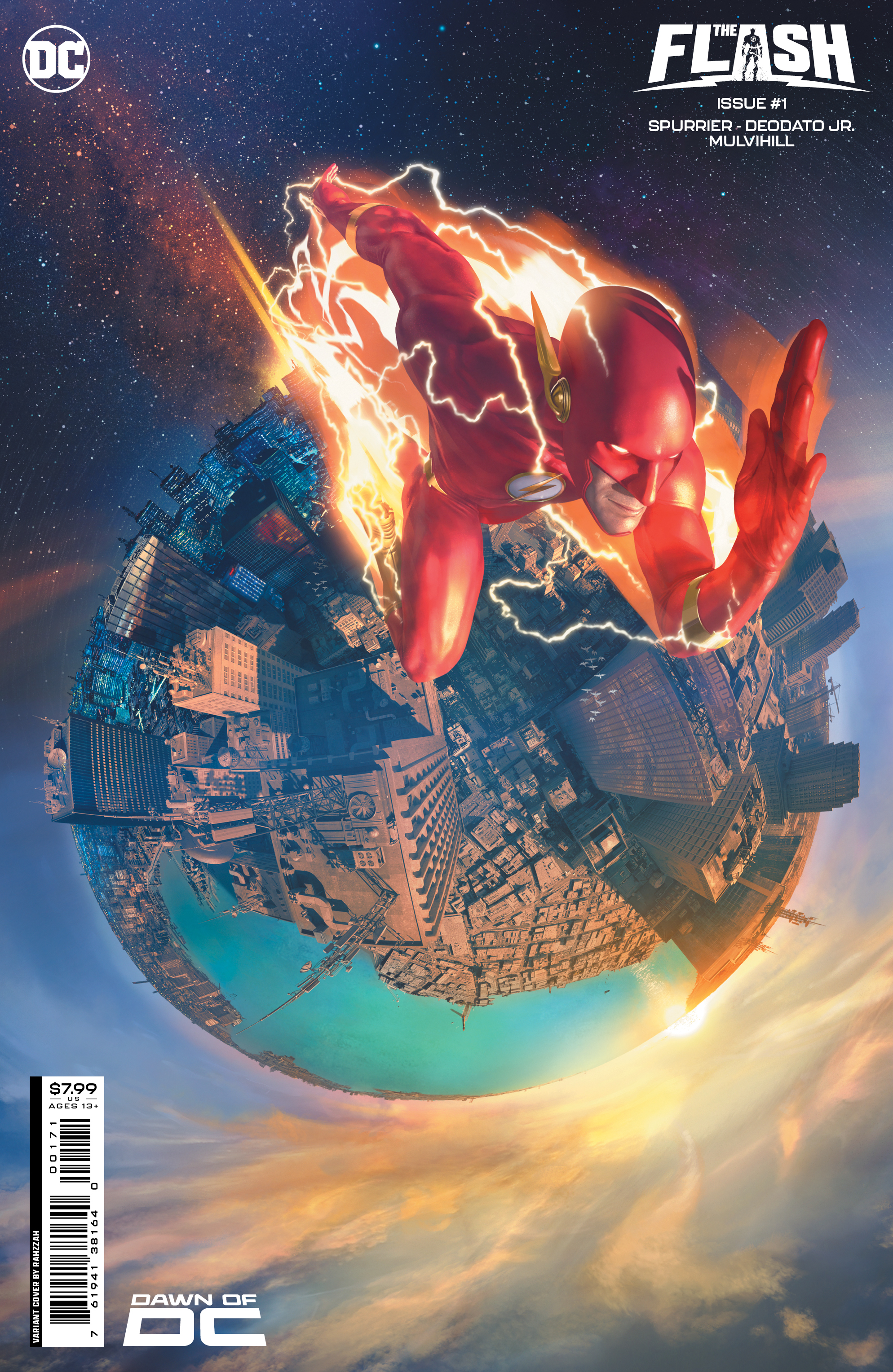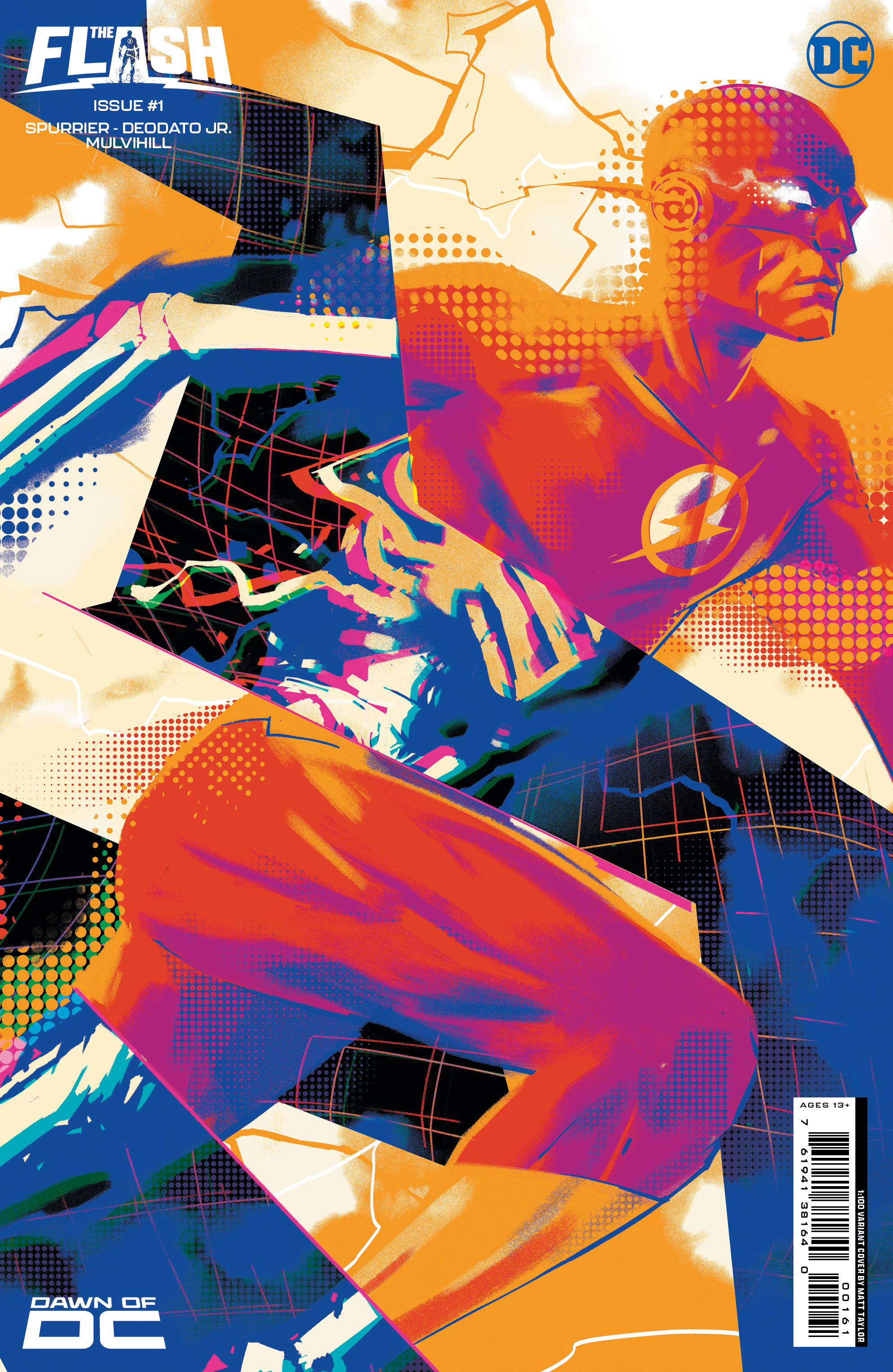The Flash #1 is a fresh start for DC's speedster - and the cosmic horror comic you didn't see coming
Interview | Si Spurrier explains why he's taking Wally West into uncharted territory

2023 has been the year of The Flash, with a high-profile movie, and the comic reaching its milestone 800th issue.
That special issue marked the end of Jeremy Adams's highly acclaimed run on the comic. Under Adams' tenure, speedster Wally West and Linda Park-West settled into a new family dynamic with the arrival of their third child, Wade.
It was a wholesome and satisfying way for the writer to leave those characters, but a superhero's job is never done. The Flash relaunches next week with a new #1 and an all-new creative team in writer Si Spurrier, artist Mike Deodato, colorist Trish Mulvihill, and letterer Hassan Otsmane-Elhaou.
The new run offers a very different take on DC's most famous speedster, one that tilts Wally West and his family and friends into darker, more dangerous "cosmic horror" territory. We spoke to Spurrier to find out more...

Newsarama: Where do we find Wally West at the start of the new book?
Si Spurrier: I'm inheriting this book after Jeremy's run - three years of incredibly good superhero comics which resulted in this wonderful and quite stable feeling situation for Wally West and his family. It felt like a really fitting ending to the run.
Now, we're coming into the story and Wally is very much all things to all people. He's a loving husband, a devoted father, a world-famous superhero. He's the fastest man who ever lived. He's got all of these different hats that he wears with aplomb.
Get the best comic news, insights, opinions, analysis and more!
The thing that we dig into quite quickly is that you can't be that person for long. You can't be everything to everyone and, although he can move faster than anybody, there's a limit to how many plates you can spin.
How does it feel picking up after Jeremy's run?
I know there was concern among fans about, you know, a new writer comes aboard and immediately flips the table and ignores everything that's gone before. That wasn't my plan at all. I'm taking a detour towards some quite unexpected genre territory, but hopefully doing it in a way that doesn't alienate everybody. It's about gently easing our way into some different vibes, but doing it with great respect and tenderness to the family picture that we have taken up.

Linda is also struggling. What's happening with her?
When she was pregnant with Wade, she developed superspeed. And during that time, she she went from being an incredibly talented journalist and mother to being somebody who was also writing five novels and saving the world and participating in all of these kinds of events. And then along came the baby and those powers left her, because they belong to the baby rather than to her.
When that happened it was quite a joyous moment, because they've got a new baby, but we're picking things up a couple of months later and I think it's no great surprise that, for somebody who's had a taste of that world where you can do incredible things and be home in time to fix dinner for the kids... Going from all of that to a regular life is going to be difficult to adjust to.
And that's just the thin end of the wedge. This sense of dislocation and loss has made her vulnerable to some outside factors, which will will gradually make themselves known.
All of these different characters, what we're gently showing is that you can at one and the same time be part of this really cohesive family dynamic, but if you just change the angle slightly, you realise that each of these characters has their own thing that is inexplicable and a bit spooky, and we're going to follow them all as those paths take them in different directions or force them to crash together.

Meanwhile, something is wrong with the Speed Force and what starts off as quite a Silver Age-feeling comic takes this pivot into horror. What can you say about that?
Yeah, so when they came to me and asked if I wanted to pitch for The Flash, cosmic horror was where my brain immediately went. I've seen a few people sort of arch an eyebrow at that, but to me it feels really obvious.
Being able to run fast is literally the least important thing about all of these characters, but that's what brings them all together and what you stick on the front cover. And yet, none of them knows how it works - and that's quite major.
Over the years, there have been many attempts to define this thing, the Speed Force, and they're all quite contradictory. All we can really say is that it's something a bit sciencey, but we don't need to worry about that. And so these people who are racing around utilising this mysterious energy, and doing incredible things with it, have literally no idea what it is. And that's fascinating. To tap into something that you don't fully understand and say, I'm doing this for the greater good and we'll worry about the consequences later... Well, this is where we worry about the consequences.
We definitely see some of that towards the end of the first issue...
Like I say, the pitch started from a position of this would make a really great setup for a cosmic horror story. But I don't think it would have been fair or respectful to just jump straight into that and flip the car on everything that had gone before.
I think with Mike's art, it just sings so well. I hope by the end of reading this first issue, readers will have forgiven me for coming in and spoiling the equilibrium, but also they will agree that veering towards that sort of mysterious cosmic horror is quite appropriate for this character and his story.

We start the issue with Max Mercury and a lot of other speedsters show up throughout. Will we see more of those characters, or are you focused mainly on Wally?
Very much the former. There's a beat at the end of issue two that I won't spoil, but I think that's going to make a lot of people see the whole thing in a different light.
It's always been my understanding of ongoing comics that the best single issues people remember tend to be self-contained stories with their own voice and point of view. To give you an example, issue four is all told from the point of view of Wally's daughter Irey, and issue five is told from the point of view of his son Jai. And I'm hoping to do more of that sort of thing. It's a way of keeping all of these different threads moving, but also seeing them through a different set of eyes.
So yes, the extended cast is absolutely central, to the extent that while Wally will always be the guiding light, there will be whole phases of this project that aren't Wally's.

How has it been working with Mike Deodato Jr? His art on the book is terrific...
I mean, he's a legend so that's very helpful! I don't know whether I would have got my peculiar pitch through the door if we didn't have a legendary name attached to it.
He's just the consummate professional. He knows exactly what he's doing. He makes everything sing. He has exactly the right balance between the primary boldness of your classic superhero comic, but with a real edge of darkness, which he can turn up with great ease. And the further we get into this, the more you're gonna see him drawing some really wild stuff. Very trippy, sort of cosmic psychedelic stuff, and he does that without skipping a beat. He seems to enjoy it when I throw these challenges at him, which is all you can ask for.
He's developed this kind of toolkit that I don't think any other professional comics artist uses in the same way. He calls it the Mondrian frames, which is he'll take a panel and he'll subdivide it using extra gutter panel frames that don't have to be there, but by putting them there, it generates an additional illusion of sequential movement, an illusion of time passing. It just helps to break up the action because there's so much going on.
And then you bring in Hass (Hassan Otsmane-Elhaou), who's such an inventive letterer. There's a whole tonne of really interesting and eccentric tricks we're learning on the job as we go, which I think makes it quite a distinct feeling comic.

What's the broader picture for the comic? Do you have your run mapped out?
I'm the sort of writer who needs to know how something ends before I start it - and I do know how it ends. I think I've got at least 24 issues. I could chop it down or I could extend it, that's part of the job, but yes, I have quite long-term plans.
Is Wally West your favorite version of the Flash? And why?
Having got into his head? Yes, he's absolutely my favorite. He's an exhausted father to a young family and I can absolutely relate to that. I have a huge amount of affection for Max Mercury, he's probably my second favorite, just because he presents such a different tone of voice. So to be able to write Max and Wally in the same book is quite a thrill.
The Flash #1 is published by DC Comics on September 26.
There are many different speedsters in the DC universe - and not all of them are nice... Discover the history of evil versions of the Flash here.

Will Salmon is the Streaming Editor for GamesRadar+. He has been writing about film, TV, comics, and music for more than 15 years, which is quite a long time if you stop and think about it. At Future he launched the scary movie magazine Horrorville, relaunched Comic Heroes, and has written for every issue of SFX magazine for well over a decade. His music writing has appeared in The Quietus, MOJO, Electronic Sound, Clash, and loads of other places too.


